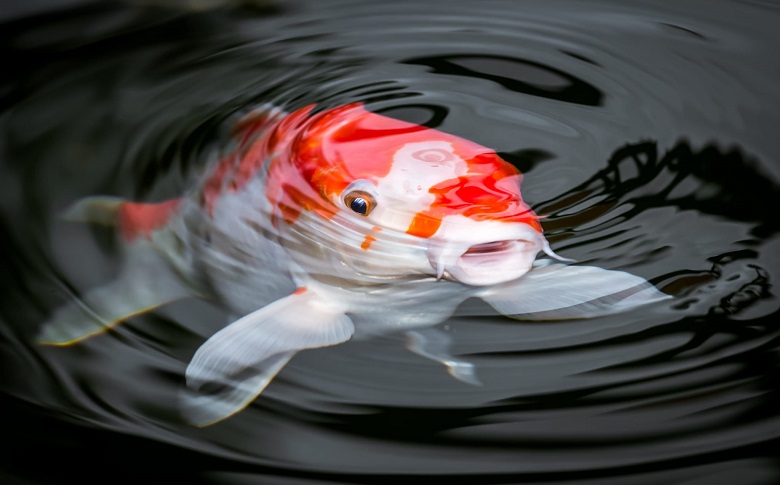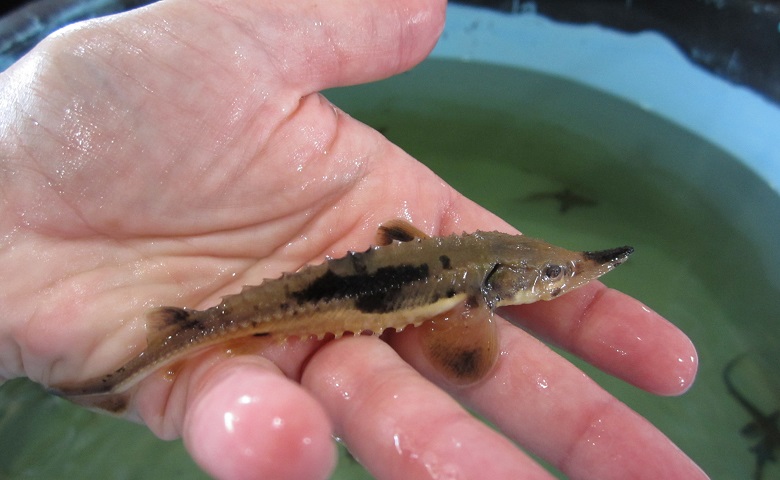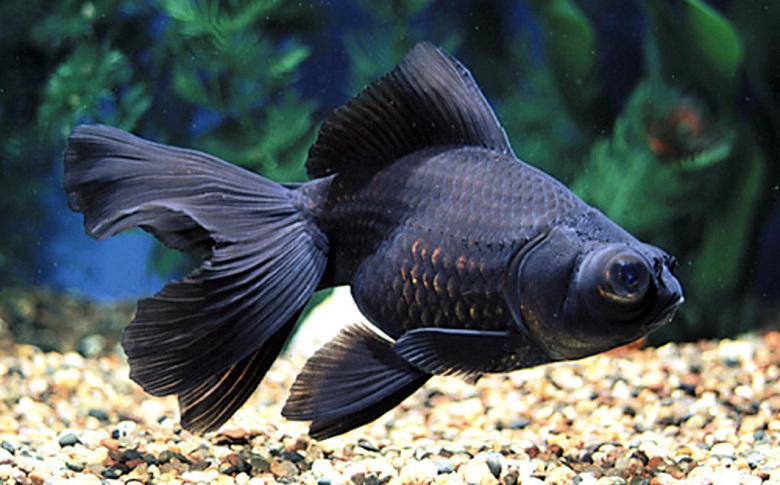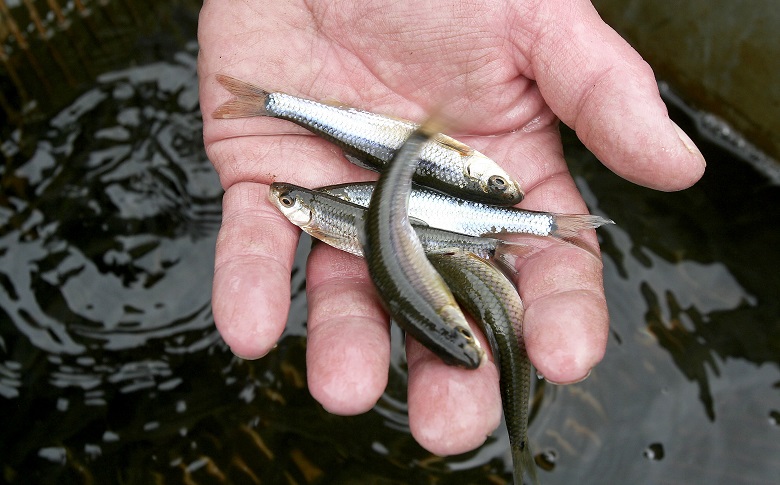Depending on your location, there is quite a wide variety of fish that can be kept in ponds.
However, you need to be fully aware of the hardiness of the type of fish you intend on keeping in your pond and whether they will be suited to the climate you live in.
Therefore it’s crucial that you do your research on the fish species to ensure the health of both the fish and the pond. Additionally, while some fish species may get along with others, some species can tend to be confrontational and may even enjoy eating fish that are smaller than them.
In the following guide, we’ll take a look at some of the best pond fish species and why you should choose them.
Contents
10 Best Types of Fish for a Fish Pond
Check out these other popular picks:
1. Koi

Koi fish are actually descendants of carp fish. It all started when carp fish were bred by Japanese farmers as soon as they noticed their bright colors, and this led to the colorful pond fish that we now call Koi. While lots of people are under the misconception that Koi fish are actually small, fully grown Koi can reach up to 3 feet in length.
They can be kept in indoor fish tanks, but once they start to get big, they should be transferred to outdoor ponds. Koi love to eat people food and can consume lettuce, cereals, watermelon as well as shrimp.
2. Mosquito Fish

You’re probably wondering why they’re called mosquitofish? Well, to put it simply as the name suggests, their diet consists mainly of mosquito larva. They also feed on flake food and algae in their natural habitat.
These silvery fish have spread all over the world and are extremely helpful when it comes to mosquito control. So it’s always great to have a few of them in your pond since the stagnant waters would definitely attract these insects. In terms of size, these are some of the smallest pond fish out there.
Overall, they reach a maximum length of 3 inches or less, so you need a smaller volume of water per fish, so they are also ideal for smaller ponds.
3. Goldfish

You probably already know this, but Goldfish are probably the most popular pet fish around the world. They make great fish tank pets because of their small size. The largest species of Goldfish reaches up to 18 inches in length and weighs up to 10 pounds.
The smaller species reaches a maximum of 7 inches. They are much easier to manage and can be left in aquariums for longer and then transferred to smaller ponds provided they are few in number.
Goldfish are also omnivorous and enjoy feeding on aquatic plants, frogs, newts as well as insect larvae in the wild. However, pet Goldfish can be fed pellet fish food and vegetables.
4. Pond Sturgeons

Pond Sturgeons are the largest species of pond fish in the world. The smallest species, which is called Sterlet Sturgeon, grow to a meter, and the largest species, known as the Beluga Sturgeon, grow to weigh up to several thousand pounds. So unless you have an extremely large pond or lake, you should not keep Sturgeon.
These fish have evolved since over 250 million years ago and are therefore extremely resilient, they are also are able to withstand extreme temperatures and thrive in darkness as in the wild, they tend to stay towards the bottom of water bodies.
So if you plan on keeping Sturgeon, make sure that there are plenty of places for them to hide so they can protect themselves from the brightness and heat of the sun. When it comes to feeding them, they require approximately 40% and over of protein by weight.
5. Siamese Algae Eaters

As the name suggests, these fish consume algae, so they are particularly preferable and desirable to pond hobbyists. They are also quite lively and shouldn’t be placed with docile fish species such as fancy Goldfish. If you do this, they can tend to stress the Goldfish out with their bubbly nature.
These fish grow up to 6 inches long and do best in waters that are anywhere between 70 to 79° Fahrenheit. However, during the wintertime, it is recommended that you keep them indoors, especially when temperatures drop low.
6. Mollies and Guppies

Both Mollies and Guppies can do well in outdoor ponds, although they are often kept indoors. However, during wintertime, they’ll likely need to be brought indoors as they need temperatures above 75° Fahrenheit. Maintaining and caring for these species is fairly straightforward though they do breed rather quickly.
So every so often, you may need to catch a few of them and sell them to a local pet store. However, never release them into the wild. If you do have a separate pond with frogs and turtles, you can use these fish as a food source as well.
7. Black Moors

Black Moors are unique and also some of the most popular breeds of Goldfish. They are black in color, unlike other Goldfish that have different color combinations. They also have telescopic eyes that protrude outside the head, and this makes the fish very noticeable from afar.
Black Moors, although small in size, create quite a mess and therefore need to be kept in at least a 20-gallon tank. This helps distribute the mess and make the environment more conducive; however, you will still need a powerful filtration to clear the murky waters.
In terms of feeding, they eat a lot of pellets and flake foods but can also be fed with live insects every once in a while so that their diet is balanced out. They also feed on algae, insect larva, and aquatic pants inside the pond.
8. Calicos

Calicos are a breed of Goldfish with fancy colors ranging from red and yellow, black and white to grey. They are good pond fish since they are very hardy and also easy to care for. They had the hardiest of all Goldfish breeds and will eat almost anything that is offered to them.
This includes fresh and frozen flakes, but you may also feed them some fruit and vegetables from time to time. They grow to a length of 13 to 18 inches and, at that size, require a minimum of 15 gallons of water to grow in.
9.Minnows

Minnows are considered peaceful fish and can live in the same habitat as other community fish like mollies, plecos, and Tetras. They have their origins in mountain stream environments and require cool waters to survive.
The water temperature should ideally be in the range of 64 to 72° Fahrenheit. The water should also be soft and contain a neutral pH, and the pond should be decorated with driftwood, rocks, and live plants.
When it comes to feeding, these fish can eat a variety of pellets and flakes as well as frozen and fresh foods. They grow to about 4 inches long and live an average of four years. Since they are small in size, they live in aquariums all their whole lives.
Ponds, however, can hold a larger number of them, which can be beneficial for controlling mosquitoes since these fish also feed on insect larvae.
10. Weather Loaches

Weather loaches are also known as pond loaches. They can withstand temperatures in the extremes, and they can generally stay in outdoor ponds even during the winter season.
You also need to get more than one of them as they are fairly social fish and enjoy staying in small groups with their own kind. They grow up to a foot long and enjoy consuming insects, algae, vegetables, and food pellets.
Final Thoughts on The Best Pond Fish
Pond fish are just like any other fish that you find in streams, rivers, and still waters; therefore, it is imperative that you recreate their natural habitat inside the pond.
This means that the water condition, the feeding, and the quantity of fish should be monitored and maintained as you set up your fish pond.

Ian Sterling, founder of Fishlab.com, began his aquarium journey over 30 years ago, driven by a deep fascination for fish and their diverse personalities. His website, Fishlab.com, is dedicated to making fishkeeping accessible and enjoyable, offering beginner-friendly guidance, expert insights, and a community for aquarists to connect and share experiences.

